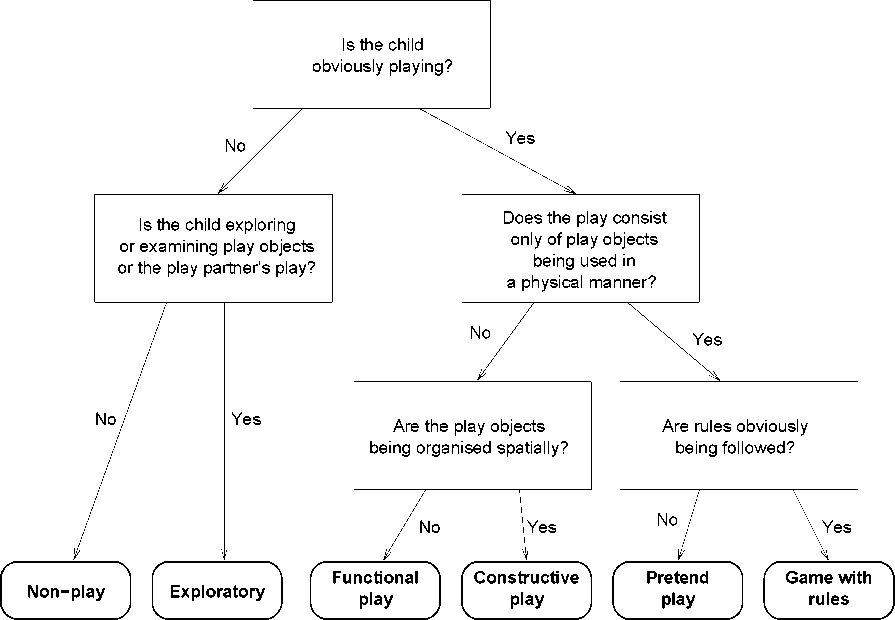AARE2002: Paper CHO02101

Figure 5: Key for classification of cognitive level of play - graphical tree format
Dallwitz, M. J. (1974). A flexible computer program for generating identification keys. Syst.
Zool., 23 50-57.
Gay, L. R. (1996). Educational research: competencies for analysis and application, 5th ed., Prentice-
Hall, Upper Saddle River, NJ.
Gittleman, J. L. and Decker, D. M. (1994). The phylogeny of behaviour. pp 80-105 in Slater, P. J.
B. and Halliday, T. R. (eds), Behaviour and Evolution, Cambridge University Press, Cambridge,
UK.
Herbert, J. and Attridge, C. (1975). A guide for developers and users of observation systems
and manuals. American Educational Research Journal, 12 1-20.
Meltzoff, J. (1998). Critical thinking about research: psychology and related fields, American Psycho-
logical Association, Washington, DC.
Metcalf, Z. P. (1954). The construction of keys. Syst. Zool., 3 38-45.
Mitchell, M. and Jolley, J. (2001). Research design explained, 4th ed., Harcourt, Fort Worth, TX.
Osborne, D. V. (1963a). A numerical representation for taxonomic keys. New Phytologist, 62 35-
43.
Osborne, D. V. (1963b). Some aspects of the theory of dichotomous keys. New Phytologist, 62
144-160.
More intriguing information
1. Globalization, Redistribution, and the Composition of Public Education Expenditures2. Credit Market Competition and Capital Regulation
3. Correlation Analysis of Financial Contagion: What One Should Know Before Running a Test
4. News Not Noise: Socially Aware Information Filtering
5. Globalization and the benefits of trade
6. The name is absent
7. An Efficient Secure Multimodal Biometric Fusion Using Palmprint and Face Image
8. Peer Reviewed, Open Access, Free
9. The name is absent
10. The Context of Sense and Sensibility